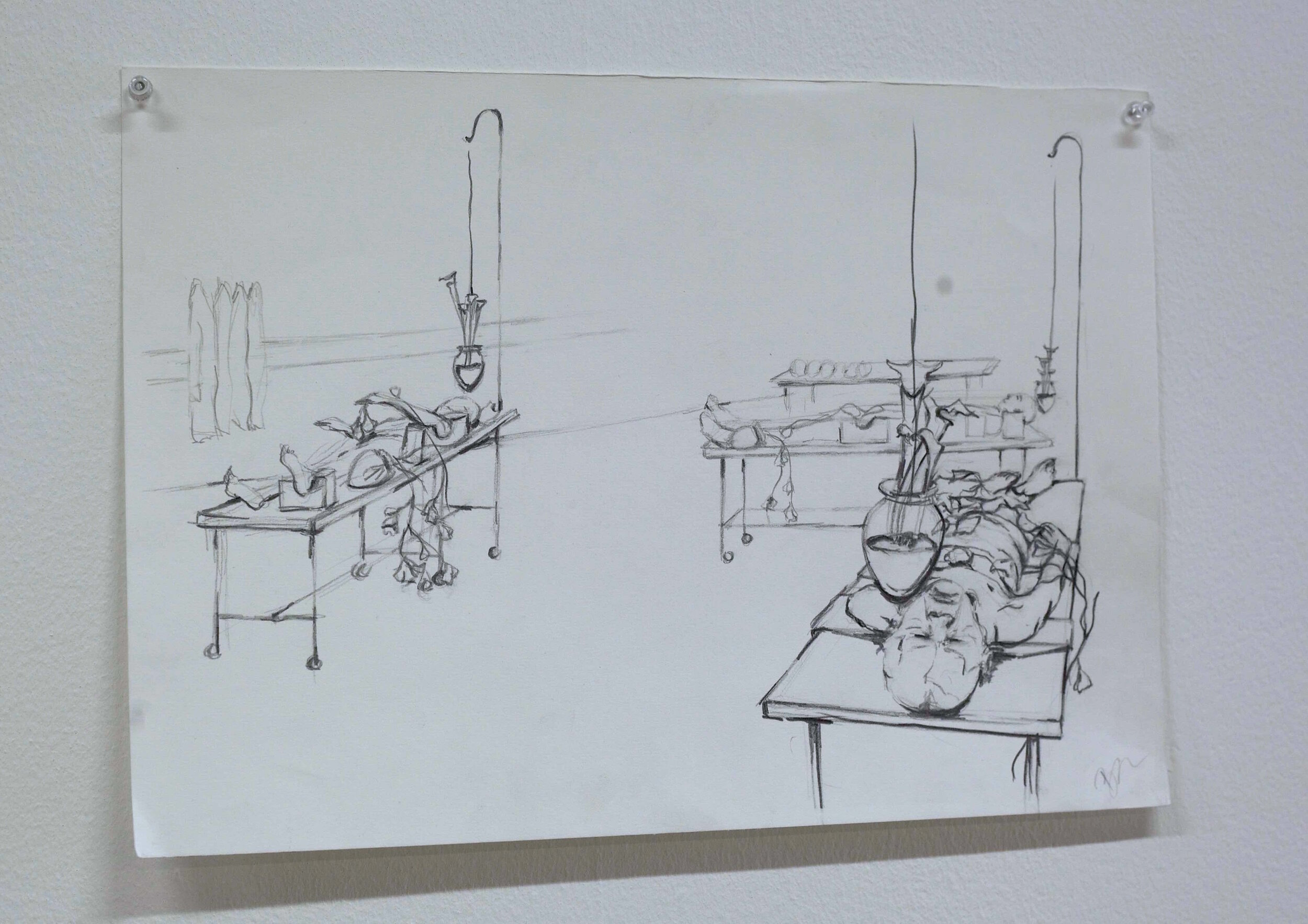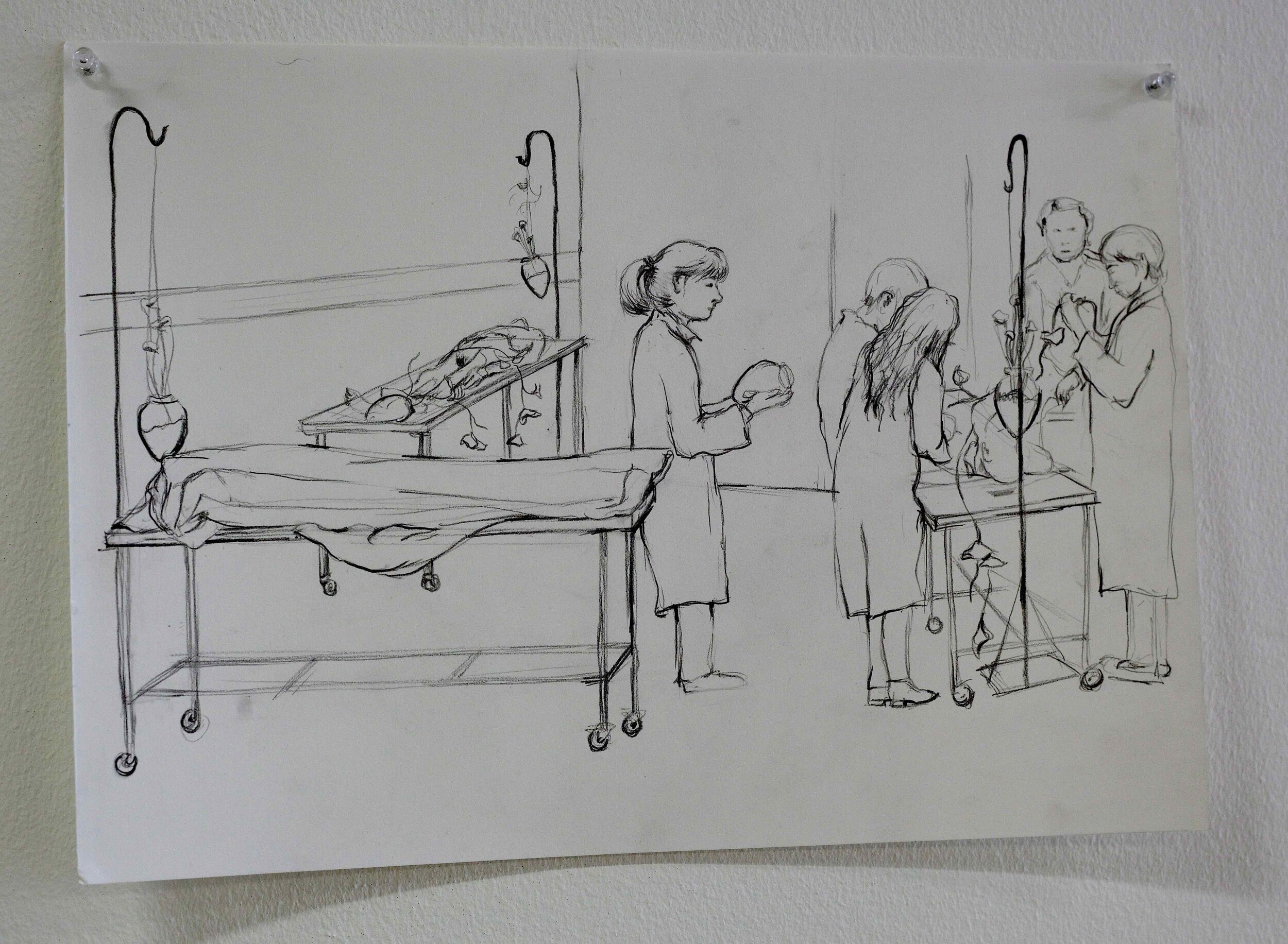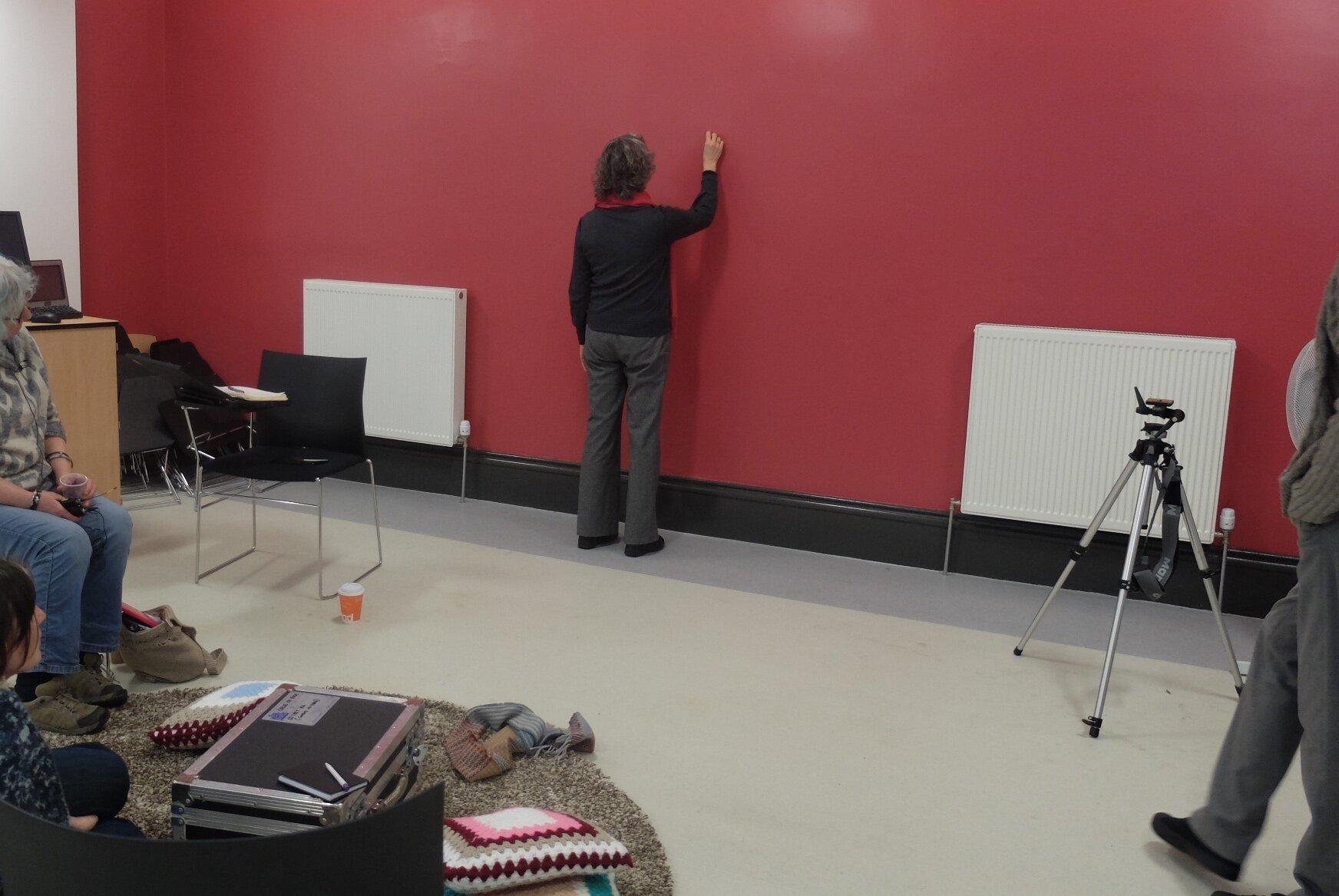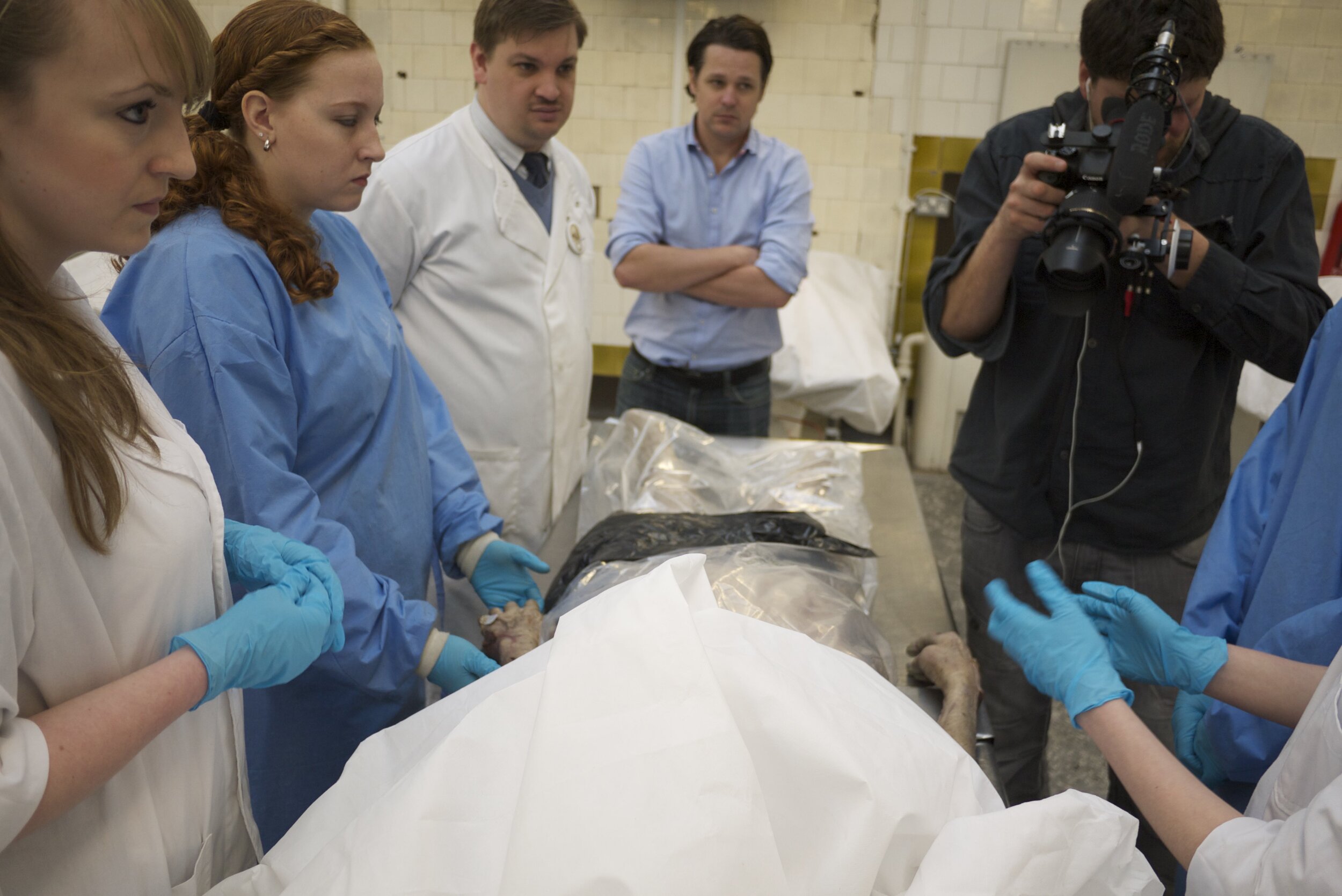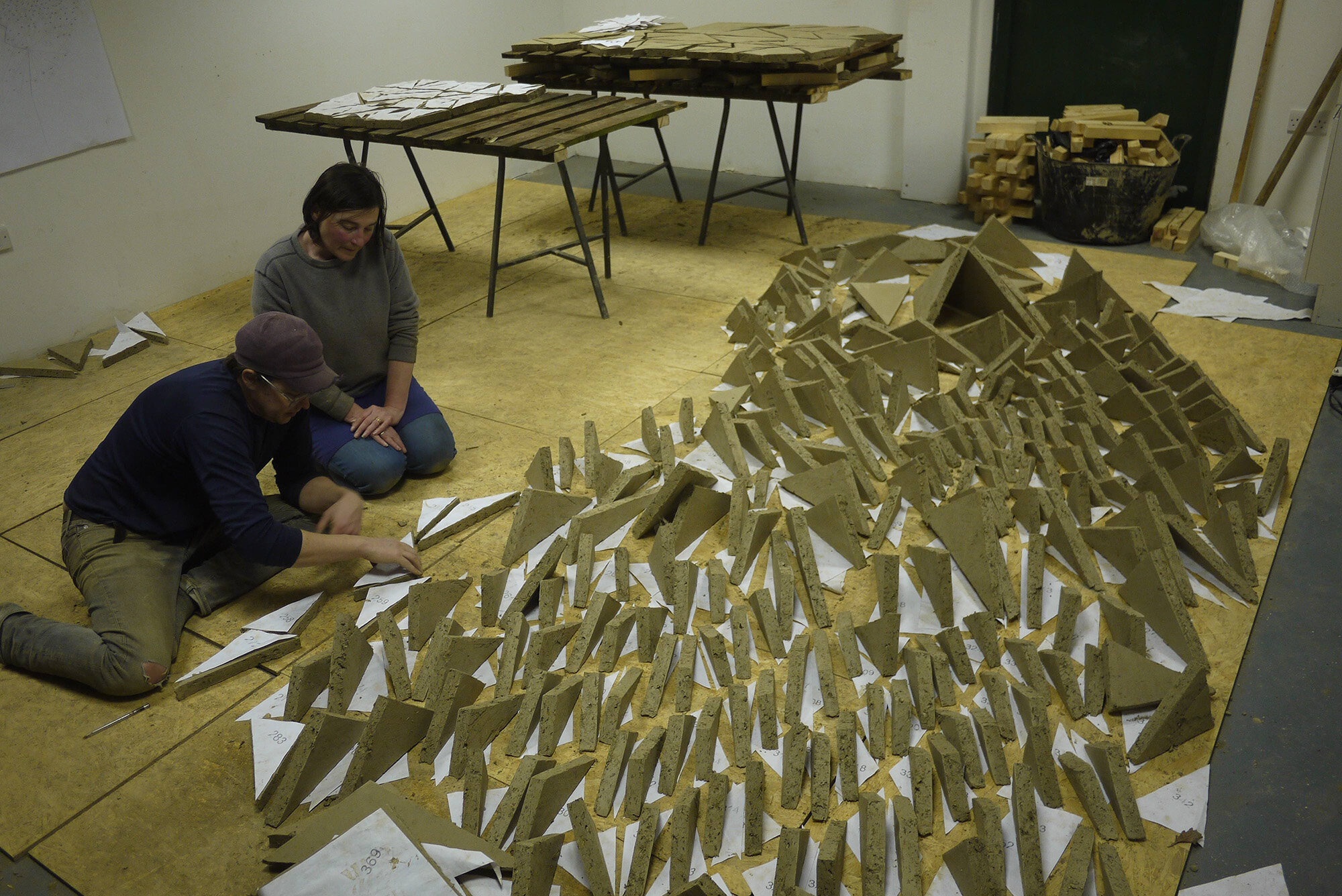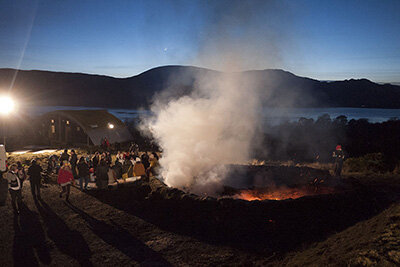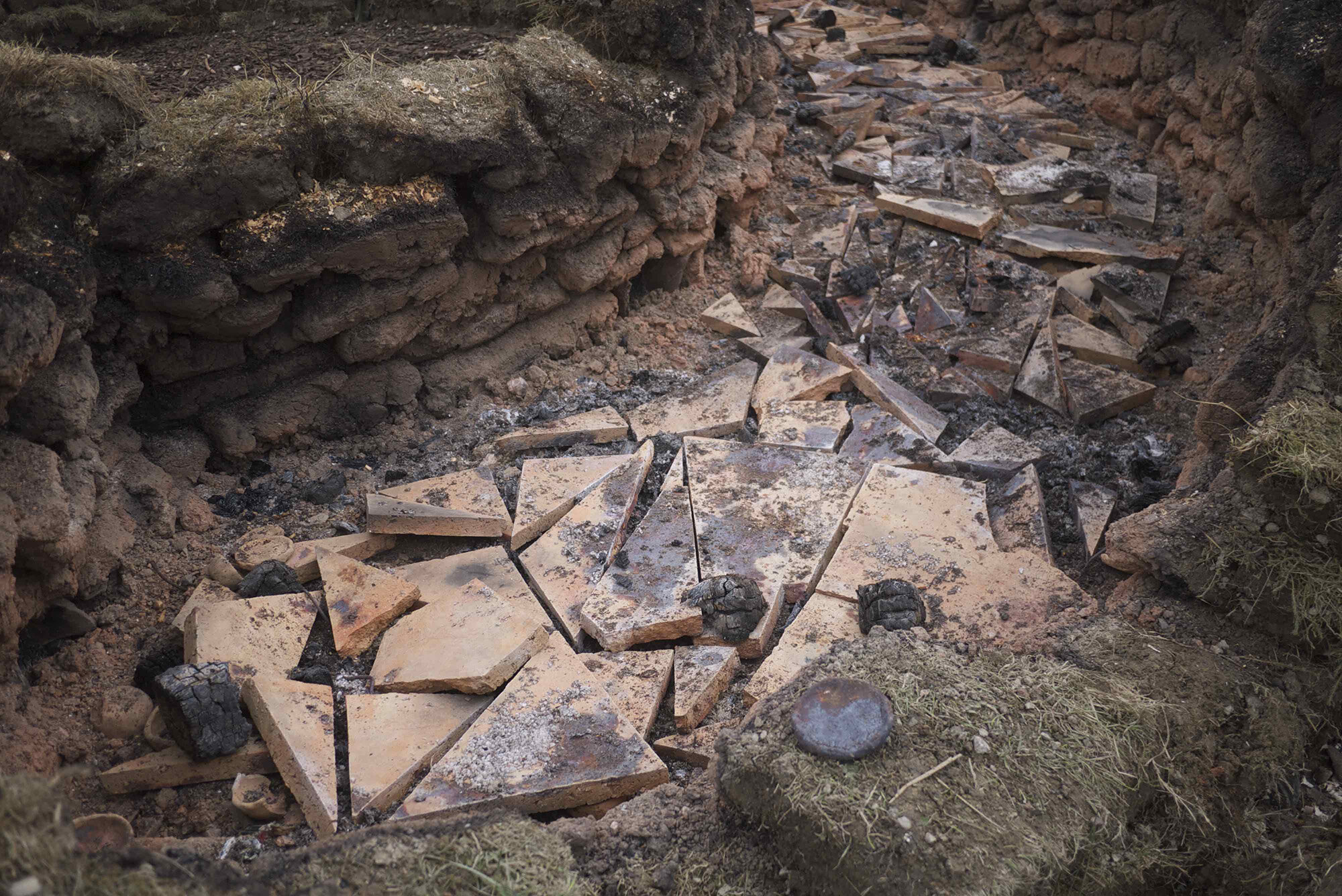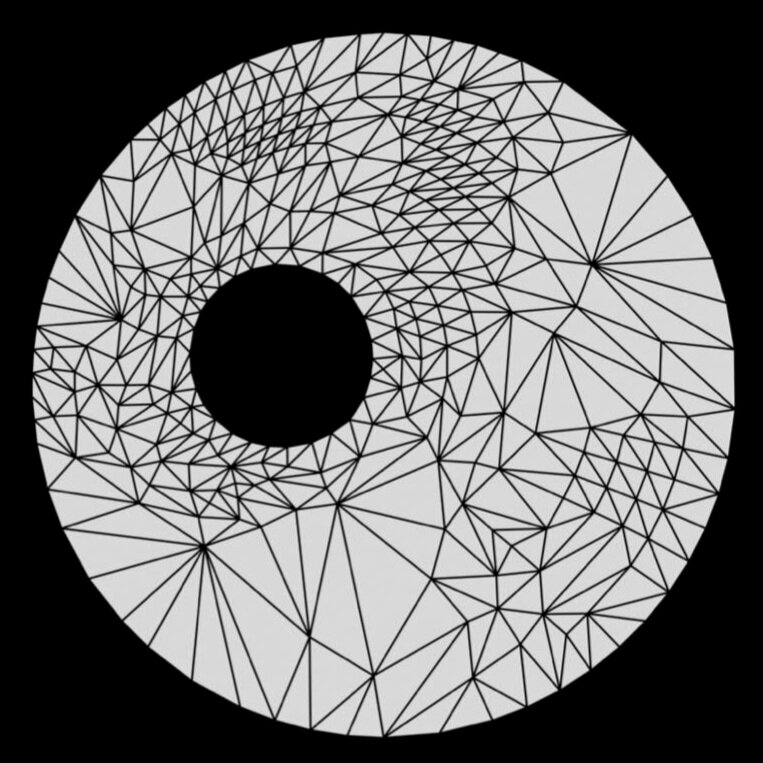RETURN TO COLLABORATIVE WORKS
CIRCLES OF FOCUS, 2015
Details
Partial circle of hand dug Orkney clay polygons, turf fired.
Partial circle of laser-sintered ceramic polygons, textual material in newspaper format, video projection, intermittent live performance.
Installation details variable.
Photography: Alan Dimmick
Video Documentary: click here (opens in new window)
Links
DESCRIPTION
Circles of Focus presents the results of a collaborative research project by artists Christine Borland and Brody Condon that explores human body donation as a mechanism for artistic research and practice. Turf-kiln fired ceramic sculptures, performance, video-documentation, and legal paperwork presented in the CCA galleries function as a proposal to potential body donors whom the artists have worked with over the past two years.
The Circles of Focus project, through sculpture, performance research and practice, binds the material body to the social imagination, embodied across institutions; of law, medicine, university and museum. Informal ‘rehearsals’ at CCA document the abstract traces transferred from the sculptures to the skin of a carefully positioned living body; Borland and Condon imagine a contemporary approach to death and dying by suggesting the anonymous body after death could be a site of ambiguity and expression.
The project has been made possible through collaborations with experts and institutions, including the Laboratory of Human Anatomy, University of Glasgow; Materialise UK; Fursbeck Pottery, Orkney; Flux Laser & CNC Studio, Glasgow and Cove Park; and with funding from a Creative Scotland Vital Spark Award.
Extract, CCA Information Guide
research/process - Participants
Research began in the anatomy dissection laboratory in Glasgow University with observation and information gathering extending into a discreet role-playing performance, which included the artists, a Nordic Live Action Role Play (LARP) researcher, Dr Jaakko Sternos, Tampere University, Finland, final year anatomy students, and donor cadavers. This was documented in drawing rather than photography or video by a recorder who also participated in the LARP.
Private participatory performances and meetings were held regularly with the prospective donors in a variety of evocative locations, including the Botanic Gardens Edinburgh and the Anatomy Museum, Glasgow University. Initial encounters included the participation of a Gestalt therapist; subsequent meetings incorporated some of the principles of Gestalt therapy but focused on projecting onto a non-human object, rather than an examination of the self.
The research was disseminated and further publically explored, in a programme of public events in the lead-up to, and during the exhibition ‘Circles of Focus’ CCA, Glasgow and at various ‘Death Animations’ Symposia; in Newcastle (BALTIC) Anyang, Korea (Anyang Public Art Projects) and The Haague (Stroom den Haag).
research/process - Materials
Extensive research and collaboration with a local potter and experimental archaeologist in Orkney led to the development of sculptural works from large amounts of earth shipped from the islands. This raw material was made into workable clay through a laborious process involving the addition of fat, sand and animal hair, then fired in a public open-air firing according (as far as can be proven) to Neolithic methods. Conversations during the firing acted as a catalyst for informal information-gathering around public responses to body donation. A parallel ‘test circle’ was made from laser-sintered ceramics, which was used in rehearsals by a performer throughout the exhibition in CCA. The pieces entangle the historical and contemporary relationships with materials that are encountered in funerary as well as everyday rituals.


